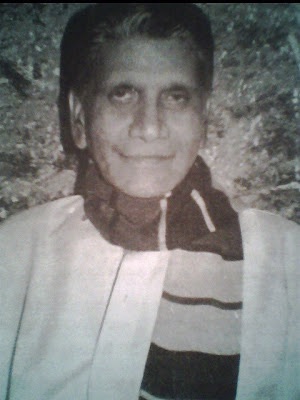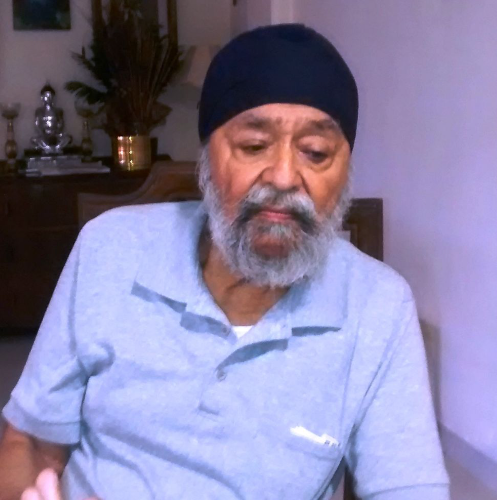Rahen na rahen hum – how prescient the words have proved for the actor on which they were picturized. Fifty-four years after the film (Mamta, 1966), and over forty years after her final film appearance in Pronoy Pasha (1978), the ‘legend and enigma’ of Suchitra Sen endures.
It is impossible to define the reasons behind stardom of this magnitude. What is it the x-factor that makes a star? For instance, it has always intrigued me why Uttam Kumar’s career in Hindi cinema has never received the kind of attention Suchitra Sen’s has. Both battled the same issues with the language. Both had the same sort of trajectory: one unambiguous hit – Uttam Kumar (Amanush) and Suchitra (Aandhi) – among other indifferent performers. Yet, Suchitra Sen has always had greater recall.



Then there was Saptapadi (1961), probably her most celebrated performance. In a testimony to her character’s enduring appeal, an opinion poll in the mid-1990s asked contemporary actresses to name their dream role. Every actress polled wanted to play the character of Rina Brown in Saptapadi. Sen plays an Anglo-Indian medical student who becomes a nurse with the Red Cross, portraying the whole range from a feisty young college student to an alcoholic wreck. Though this is considered a high point in the Uttam Kumar-Suchitra Sen partnership, halfway through the shoot, Suchitra Sen announced that she would not work in it, reportedly upset about the priority of names of actors appearing in the credits.




Suchitra Sen played a working woman in many of her others films like Sabar Uparey (1955), Harano Sur (1957), Indrani (1958), Hospital (1960), Haar Mana Haar (1972). This gave her an agency that most actresses of the era never had. Also, in a profession notoriously unforgiving to married women, Suchitra Sen’s career in cinema began after her marriage. ‘In her embodiment of an unparalleled agency, she was distinct from the suffering women of Sarat Chandra, as well as the overtly sexualised, erotic object of the contemporary Bollywood film,’ wrote Sharmistha Gooptu in her book Bengali Cinema: An Other Nation.

Unlike, her contemporaries like Uttam Kumar, Madhabi Mukherjee and Supriya Devi who found their cinematic highs in the films of Satyajit Ray, Mrinal Sen and Ritwik Ghatak, Suchitra never ventured out of the mainstream cinema mould. She refused Satyajit Ray’s offer to cast her in an adaptation of the Bengali novel Devi Chaudhurani as also Raj Kapoor.
One of the reasons for her enduring enigma is her complete withdrawal from public life in the wake of the dismal failure of Pronoy Pasha (1978). (One unknown trivia pertaining to this is that it stalled one of Rajesh Khanna’s early films, Nati Binodini.) Not even the Dadasaheb Phalke Award could bring her out of seclusion. In the last decades of her life, she become closely associated with the Ramakrishna Mission. As Shoma Chaterji narrates, ‘Once, author Kana Bosu-Misra called her up. “They are telecasting Deep Jwele Jai on the small screen. What a brilliant performance you have given in the film,” she said. The voice at the other end of the line kept quiet for a few moments, and then said, “That is the actress Suchitra Sen, that is not me at all… I did all that once upon a time for my bread and butter. Today, my entire world is filled with thoughts of Thakur (Ramakrishna).”’
Suchitra Sen epitomized the new Bengali bhadramahila of the 1950s, career-oriented, urbane and sophisticated, who could hold her own in modern society. Despite shunning the limelight in the last three decades of her life, the spell she cast on the Bengali psyche endures, so much so that even now, the best compliment one can pay a Bengali woman is to tell her ‘You look a bit like Suchitra’.
Tags
About the Author
Shantanu Ray Chaudhuri is either an 'accidental' editor who strayed into publishing from a career in finance and accounts or an 'accidental' finance person who found his calling in publishing. He studied commerce and after about a decade in finance and accounts, he left it for good. He did a course in film, television and journalism from the Xavier's Institute of Mass Communication, Mumbai, after which he launched a film magazine of his own called Lights Camera Action. As executive editor at HarperCollins Publishers India, he helped launch what came to be regarded as the go-to cinema, music and culture list in Indian publishing. Books commissioned and edited by him have won the National Award for Best Book on Cinema and the MAMI (Mumbai Academy of Moving Images) Award for Best Writing on Cinema. He also commissioned and edited some of India's leading authors like Gulzar, Manu Joseph, Kiran Nagarkar, Arun Shourie and worked out co-pub arrangements with the Society for the Preservation of Satyajit Ray Archives, apart from publishing a number of first-time authors in cinema whose books went on to become best-sellers. In 2017, he was named Editor of the Year by the apex publishing body, Publishing Next. He has been a regular contributor to Anupama Chopra's online magazine Film Companion. He is also a published author, with two books to his credit: Whims – A Book of Poems (published by Writers Workshop) and Icons from Bollywood (published by Penguin Books).







.jpg)


